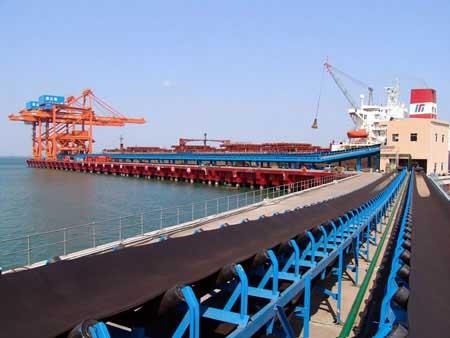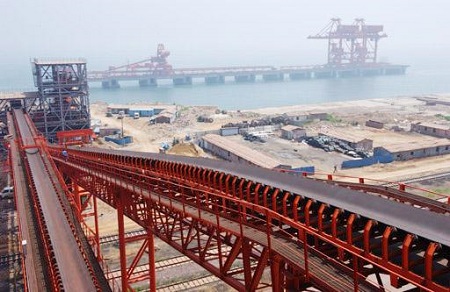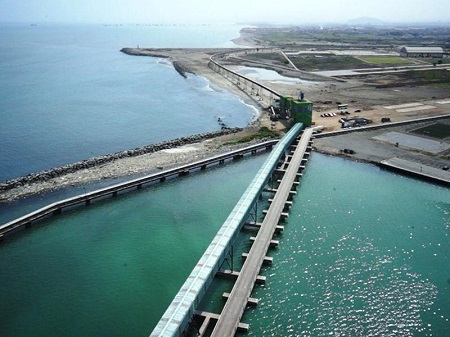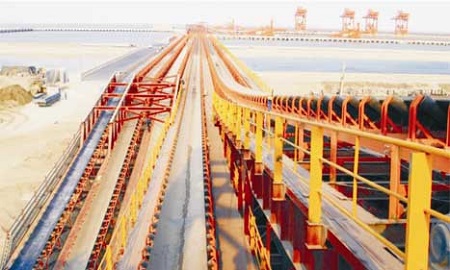News
The six important components of a belt conveyor system
Publisher: Release time:2021/5/24 10:44:35 Click:31

The belt conveyor is mainly composed of six parts: conveyor belt, supporting roller, driving device, braking device, braking device, and braking device.
1 conveyor belt
Conveyor belts are used to transmit traction and carry goods, mainly rubber belts or plastic belts.
(1) The fabric core rubber belt is the most commonly used conveyor belt. The lining material is mostly cotton canvas. Other chemical fiber fabrics can also be used, such as cotton interwoven canvas, nylon canvas, and polyester canvas and so on.
(2) Steel rope core rubber belt; it has high tensile strength, good trough forming, small elastic elongation and long service life. It is suitable for long-distance and large-capacity belt conveyors.
(3) Plastic conveyor belt is made of plastic instead of rubber, which has the advantages of oil resistance, acid and alkali resistance, but poor temperature resistance; simple process, low cost and good quality.
2 Support roller
The function of the idler is to support the conveyor belt and the materials on the belt, reduce the sag of the conveyor belt, and make it run stably.
The main types of rollers include trough rollers, flat rollers, buffer rollers and self-aligning rollers, etc., which can be selected as required.

3 drive device
The function of the driving device is to transmit the traction force to the conveyor belt through friction by the driving roller to make it move and transport the goods. Most belt conveyors are driven by a single roller, but as the volume and distance of transportation continue to increase, the traction required by the transmission roller is correspondingly increased. Therefore, double roller and multi-roller drive have appeared. Each drive roller can be equipped with one or two drive units, and the end of the drive roller shaft is connected with the drive unit by a coupling.
4 Braking device
When stopping under load, in order to prevent the inclined upward conveyor belt from moving backwards under the action of the cargo weight, causing material to flow back, a braking device should be installed at the driving device according to the specific situation.

5 Tensioning device
The function of the tensioning device is to maintain the necessary initial tension of the conveyor belt to avoid slipping on the driving roller, and to ensure that the sag of the conveyor belt between the two supporting rollers is within the specified range. Tensioning devices mainly include screw type, trolley weight type and vertical weight type.
6 Redirection device
The belt conveyor uses reversing rollers or reversing roller groups to change the direction of movement of the conveyor belt.

For more product details, please consult QSHI.
